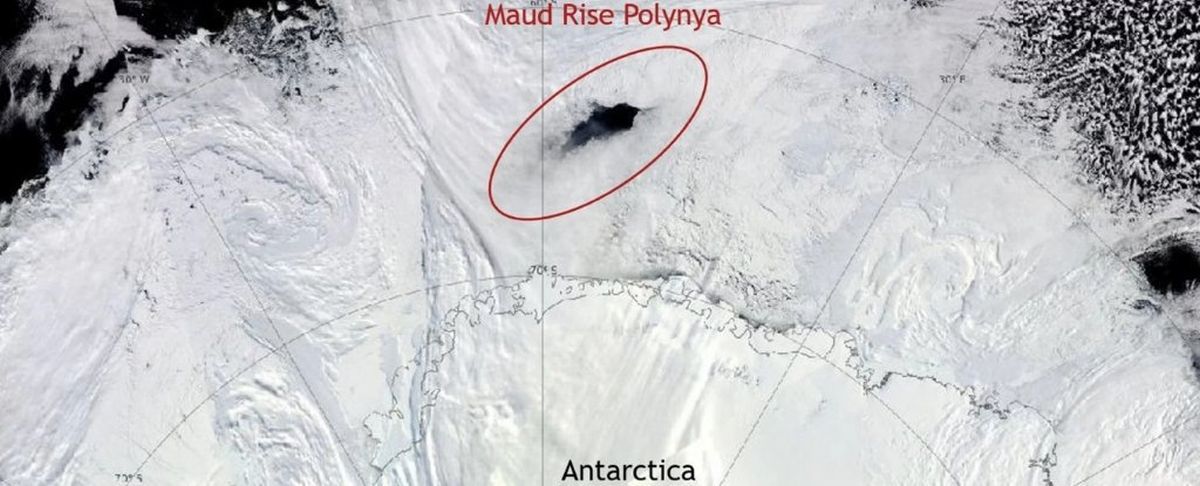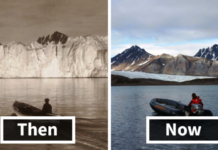In the early 1970s, when satellites first began snapping aerial photos of Antarctica, scientists noticed a mysterious hole in one of Antarctica’s seasonal ice packs, floating on the Lazarev Sea, in the middle of the Antarctic winter. Interestingly, the hole disappeared in summertime, leaving scientists stumped.
Then, a year and a half ago, scientists spotted a giant hole, which spanned about 3,700 square miles, in the middle of the Antarctic winter. They discovered that it would balloon in size over the weeks to come, reaching 31,000 square miles (a stunning 740% larger) before it merged with the open ocean as Antarctic sea ice retreated with the onset of summer.
Now, a team of researchers claim they have the answer to the appearance and disappearance of these mysterious holes.
Using a combination of satellite observations and climate models, scientists at the New York University Abu Dhabi (NYUAD) have concluded the hole – known as polynya – was likely caused by a powerful cyclone that spun up in Antarctica’s Weddell sea before migrating eastward into the Lazarev sea in mid-September 2017.
According to their analysis, after warm air and cold air collided at the South Pole, the swirling inward winds of the cyclone – reaching 117 kilometres an hour and whipping up waves 16 metres high – pushed the Antarctic ice pack outward from its center in all directions, creating a hole that would continue to expand over the days to come.
#Sentinel1 image (yellow frame: 30Sept17) shows #WeddellPolynya persistence, despite #Antarctic sea ice drift @ESA_EO @OSISAF @polarview pic.twitter.com/QG3aIoRQpV
— Mark Drinkwater (@kryosat) October 1, 2017
While the holes look devastating, scientists say they serve a purpose for animals in the South Pole, with the likes of seals and penguins using them for pathways. They can also help regulate and give an indicator of climate change. Gizmodo observes:
“In an age of human-caused climate change, that’s a valuable insight, because rising temperatures could alter the frequency or intensity of polar cyclones, potentially affecting the occurrence of these polynyas and, in turn, global ocean circulation.”
Lead author of the study Diana Francis, notes:
“Once opened, the polynya works like a window through the sea-ice, transferring huge amounts of energy during winter between the ocean and the atmosphere. Because of their large size, mid-sea polynyas are capable of impacting the climate regionally and globally as they modify the oceanic circulation.
“Given their large size in the middle of the ice pack, mid-sea polynyas, through intense deep convection, are capable of impacting the climate locally, regionally, and potentially globally by modifying the oceanic circulation underneath. This includes impact on the regional atmospheric circulation, the global overturning circulation, Antarctic deep and bottom water properties, and oceanic carbon uptake.”
Under warmer climates, previous research indicates that cyclone activity at Earth’s poles will only intensify, and extratropical cyclones will move closer and closer to Antarctica. No wonder Francis warns that as climate change becomes worse, cyclones will become more common and polynyas will grow bigger:
“Given the link between polynya and cyclones we demonstrated in this study, it is speculated that polynya events may become more frequent under warmer climate because these areas will be more exposed to more intense cyclones.”
Even if they don’t stir up more climactic changes, an abundance of these holes could throw our climate models right out of whack.






